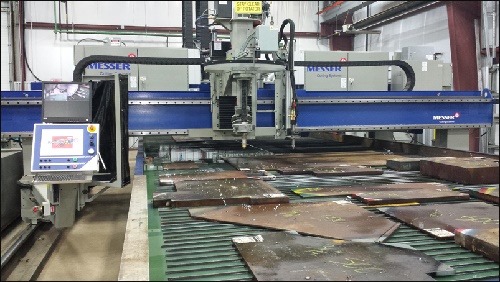Joining Processes:
an Overview
Technologies
Welding, Brazing, Bonding, Riveting, Clinching, Fastening are typical Joining processes, that use different forms of energy to achieve the purpose of keeping firmly together elements that were separate to begin with.
When the processes require input of energy, this is supplied generally by suitable equipment under control, to provide satisfactory results at minimum cost.
Parts are prepared by processes like cutting, machining, beveling, and then deoxidised and cleaned as necessary to have them respond favorably to the conditions conducive to the best possible joints, safe, economic and durable.
The history of technological progress registers innovative steps that were revolutionary when first attempted, to be then improved and perfected until one cannot imagine how to manufacture without them.
For an initial introduction to welding the following internal link is recommended: Welding-overview.
Cutting
Cold cutting processes like sawing, shearing, drilling, filing and abrasive water-jet cutting are among those used to bring the element to be joined to their shape and dimensions without using heat.
Among operating hot cutting processes, hand held gas cutting torches using acetylene or other combustible gases and oxygen have a long history of successful employment.
Plasma Arc Electrical cutting torches are used either hand held or mounted on complex constructions endowed with automatic, computer controlled movement and profiling.
High energy laser beam guns produce clean cuts at high speed.

Courtesy of www.acmachinery.com/gallery
Cleaning and degreasing
Several processes are designed to clean and degrease metal parts, as most joining procedures require that the surfaces be free of any surface dirt or oil that could interfere with welding or brazing.
Welding and Brazing
Although cold Welding special procedures can be applied in certain cases, most processes require application of heat either locally, through special torches, or for Brazing in suitable furnaces that bring the parts at the brazing temperature in a controlled atmosphere in well defined heat cycles.
In most of cases current practice requires that precise procedures be designed and verified by establishing the exact techniques to be employed in every case and the correct parameters to be used.
Heat treating
Metallurgical processes depend on exacting conditions of the materials for the transformation being performed to be successful.
Therefore accurate temperature cycles must be applied before and after the heat application proper of the processes used, to complete the operation correctly.
Processes
The list of processes described in this website is given in the Index-Welding-Page.
Under the same heading as here above, one can find a long list of processes whose title describes the content of the relevant page, that is displayed by clicking on the active link.


